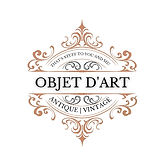Vintage thrift sandalwood money box with secret compartment ( if you can't find it I will show you once purchased!?👍) lovely little box 29 cm wide 7 cm depth 6 cm height some age related marks
The history of wooden money boxes is long and includes a variety of uses, from saving money to hiding wealth, and even as a way to teach children good habits:
Medieval times
Money boxes were important for both adults and children. Adults used them to hide their wealth and savings in their homes, while children would smash their money boxes on St. Stephen's Day to collect money for Christmas treats.
Victorian era
Penny banks were a regular part of the business at Hornsey School Board meetings, as a way to encourage good habits in children.
Piggy banks
The popularity of piggy banks is thought to have originated in Germany, where pigs were considered a symbol of good fortune. The oldest German piggy bank dates back to the 13th century. The shape of the piggy bank is thought to have come from the idea that pigs were a symbol of fertility and frugality.
Thrift and saving
In the past, thrift and saving were considered good things, and people would save their money instead of spending it immediately.
Vintage thrift sandalwood money box with secret compartment
Stock No
550

































